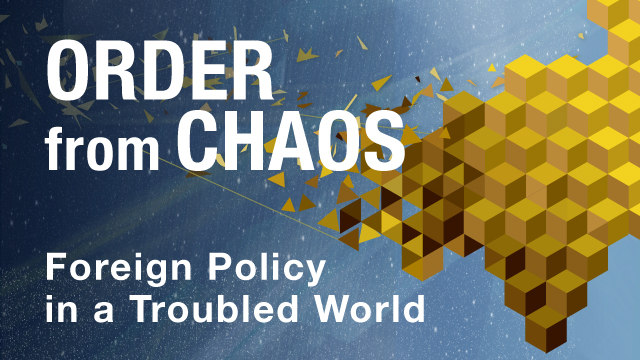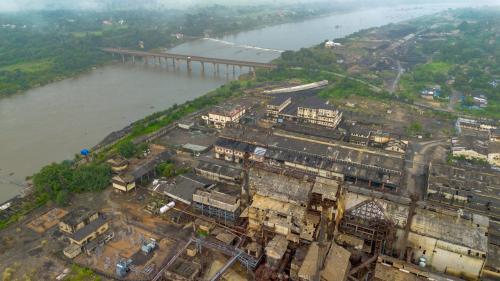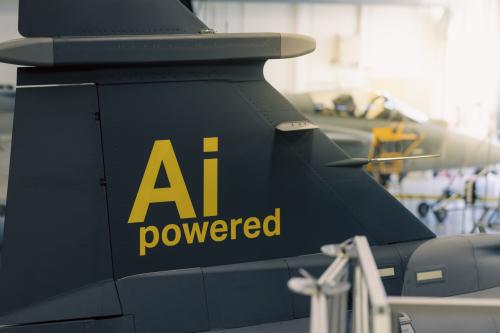On November 19, Brookings hosted a public discussion about security in the Indo-Pacific theater with Admiral Samuel Paparo, who since this past spring has been America’s combatant commander for the Indo-Pacific Command. The Indo-Pacific Command is the largest of the United States’ six combatant commands, covering a larger area of the globe’s surface than any of the others. It is also at the front line of deterring conflicts in the region. Before this assignment, Paparo, as commander of the U.S. Pacific Fleet, had the top job in the U.S. Navy within that command, meaning that he now has nearly five years of consecutive service in the region. Recognized as one of the United States’ most dynamic military leaders, Paparo’s insights are of particular interest given China’s rise and the importance of the region for U.S. security—Secretary of Defense Lloyd Austin has described the Indo-Pacific as the country’s “priority theater.” We encourage you to watch our full conversation with the admiral, but here are what we consider to be the top six takeaways:
In recent years, some analysts have warned that China has caught up to the U.S. military for scenarios involving Taiwan in particular—the island that Beijing considers a renegade province that must someday be brought back under central control, including by force if necessary. Under the 1979 Taiwan Relations Act, the United States has an obligation to “provide Taiwan with arms of a defensive character” and “determine, in accordance with constitutional processes, appropriate action by the United States” in response to “any threat to the security or the social or economic system of the people on Taiwan and any danger to the interests of the United States arising therefrom.” Many U.S. wargames predict that China would succeed in defeating the United States, its allies, and Taiwan in a Taiwan contingency, as Christian Brose has explained in his excellent book, “The Kill Chain.” Paparo made clear that China would face difficult odds whether in a D-Day-style invasion or a more indirect coercive approach like a blockade.
While the military balance in the Indo-Pacific remains favorable to the United States and its allies, the wars in Europe and the Middle East are putting stressors on this advantage. When asked how these conflicts were affecting defense preparedness in the Indo-Pacific, Paparo said that conflicts, as of this year, are “eating into stocks.” His concerns included systems for air and missile defense like the land-based Patriot and ship-based Aegis. When pressed specifically on whether U.S. support for Ukraine was diverting weapons from Taiwan, he highlighted how he had already been “dissatisfied with the magazine depth” (which would be critical in a protracted conflict) and was now “a little more dissatisfied” with it.
One popular idea that Paparo challenged is the idea that by emulating Ukraine’s or Israel’s response on the battlefield, specifically, their deployment of drones, the United States can largely solve its military challenges in a Taiwan contingency. He noted that the Pacific is a vast battlespace, 8,000 miles east to west and a comparable distance north to south. DIY (do it yourself) or FPV (first-person view) drones cannot handle that vast space: “A pocket drone that can stay airborne for an hour ain’t going to do it” (for certain scenarios). Paparo was not belittling the importance of drones; he has previously been quoted as arguing that they could contribute to a “hellscape” environment for any Chinese ships trying to cross the Taiwan Strait to attack Taiwan. Rather, he was underscoring that they are only one aspect of a proper military modernization strategy for the United States in the Indo-Pacific region.
Several years ago, Xi Jinping gave his military leaders the task of being ready to take Taiwan—even in the face of U.S. military involvement—by 2027. Paparo is unpersuaded that year means very much, especially now that it is only 25 months away. However, Indo-Pacific Command must be ready to help defend Taiwan even before 2027, and it should certainly plan on being prepared to defend Taiwan after that year as well. According to Paparo, China might undertake what it believes to be a “war of necessity” if it considers one of the three conditions under its 2005 Anti-Secession Law breached, namely, “if there was a Declaration of Independence … if the [People’s Republic of China] PRC were to see unification or if the PRC were to see a third power intervene on Taiwan’s behalf, or … if the PRC were to derive that unification was irrevocably beyond its reach via any other means.” Whatever Xi’s motives for picking 2027 as a target date, they do not themselves represent a decision to attack that year (or any particular year).
In 2023, the United States and the Philippines announced plans to expand the 2014 Enhanced Defense Cooperation Agreement (EDCA) to give the United States access to four additional bases in the Philippines, adding to the five the country already enjoyed. The media touted the deal’s military and strategic significance—of the additional sites, three are Taiwan-facing and one is South China Sea-facing—and China responded by claiming that expanded EDCA cooperation would “seriously harm Philippine national interests and endanger regional peace and stability.” Paparo, however, confirmed that these sites are presently oriented for humanitarian assistance and disaster relief. Any preparation of these locations for serious combat operations would require the Filipino government’s agreement and substantial additional construction work.
Even though Pyongyang continues to test long-range missiles with adequate range to reach the United States, most recently this past summer, the United States has not yet seen evidence that North Korea has mastered the difficult task of building reentry vehicles that could contain nuclear warheads and that could withstand atmospheric resistance and heating when returning from space at a speed of 7 kilometers per second. This may help explain why the testing continues.
The sum total of these six observations suggests to us that the United States’ strategic posture and defense commitments in the Indo-Pacific remain robust, but maintaining its advantage will require work. On balance, Paparo’s assessments are reassuring but also represent a renewed and urgent call to action and improvement.
The Brookings Institution is committed to quality, independence, and impact.
We are supported by a diverse array of funders. In line with our values and policies, each Brookings publication represents the sole views of its author(s).





Commentary
Six takeaways from Commander of US Indo-Pacific Command Admiral Samuel Paparo
December 6, 2024